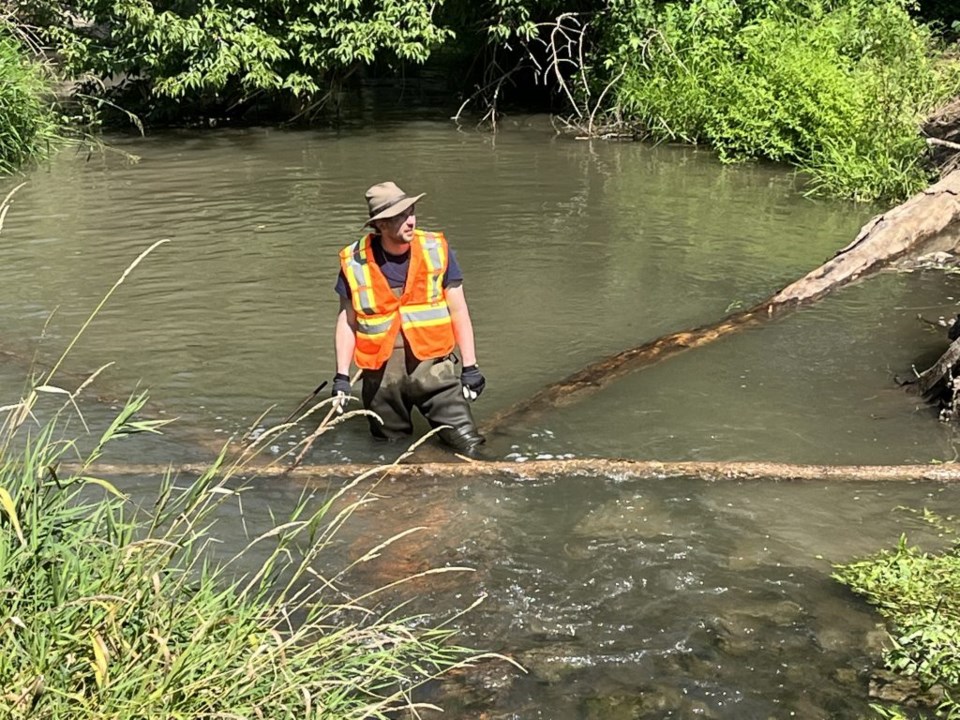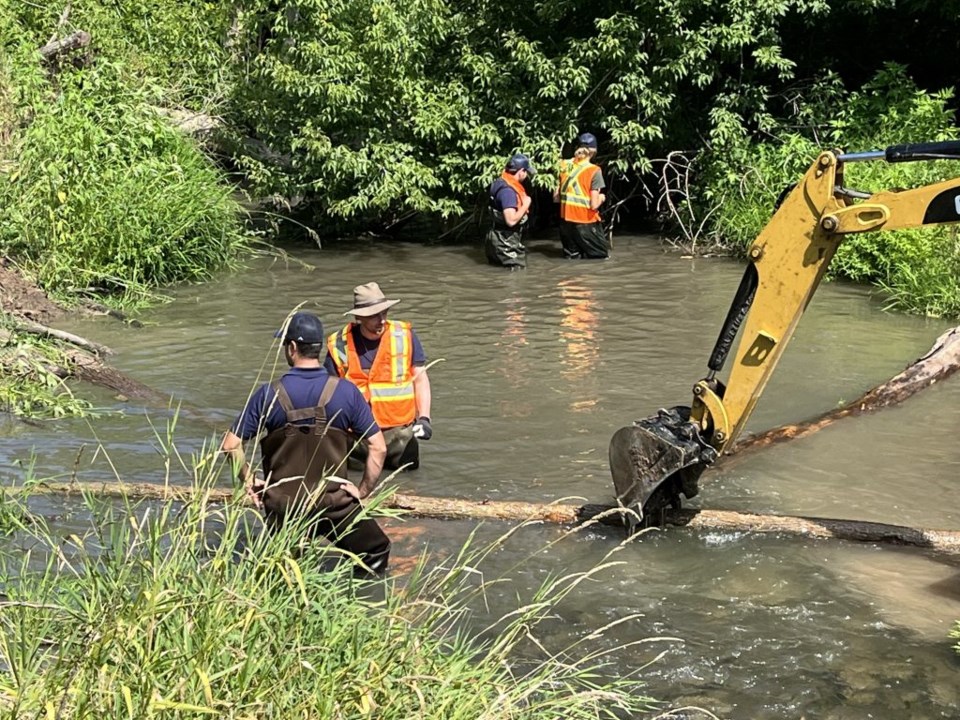
Niagara Peninsula Conservation Authority (NPCA) crews were back working to rehabilitate the Two Mile Creek Conservation Area in Niagara-
on-the-Lake this week.
The restoration efforts follow the 2021 clearing of infected ash trees on both sides of the Butler Street location and this past spring’s planting of 5,000 native deciduous and coniferous trees to regenerate the forest.
This week’s work involved the installation of cross vanes in the creek to improve the habitat for the numerous fish species that swim there. Cross vanes use natural materials (downed trees and stone) to focus the creek’s energy into existing pools within the creek that have started to fill up with sediment.
To prepare to work in the area, NPCA employees constructed a temporary barrier below one side of the footbridge that crosses the creek. Restoration specialist Stuart McPherson explained that the barrier was there to keep fish from swimming where the crew and contractors were working.
“What we’re trying to do is to help the creek by concentrating it,” said McPerhson, “to help scour out some of the sediment that’s been building up in the creek. Erosion happens on the banks, depositing sediment into the creek. That moves down the creek and settles in the lower, cooler pools where fish tend to take refuge on these hotter days.”
The sediment typically comes from upstream sources of erosion. The cross vanes are laid in a way that focuses the creek’s energy, reducing soil erosion on the banks. The sediment reduction will help provide a better habitat for both fish and insects.
McPherson explained the logs being situated across the creek came from some of the ash trees cut down in the area last year. No new felling of trees occurred this week. At least 15 one-cubic-yard bags of stone sat creekside awaiting their destination in and alongside the water.
“We’re trying to direct the water into these pools to scour out the sediment,” said McPherson. “Often in creeks you have a ripple-pool sequence. You get a lot of cobbles in there, and right after there’s a pool. Some creeks meander and others go up and down, like this one. We’re expecting this will make deeper pools.”
While The Local was visiting the site, he directed a backhoe driver to adjust the position of the longest log to fine-tune the direction of the flow. The next step was to fasten the logs into place.
“There are three logs that are put together,” he explained. “We’re going to drill holes and tap through with rebar so it holds in place. This system will eventually rot. But it will help give a bit of a boost to the creek, creating a bit more pressure in that specific spot. It will generally help the overall creek health.”
The cross vanes were to be installed at two locations on the north side of the footbridge, one visible right next to the bridge, the other about 100 metres deeper into the forest. The NPCA says it will monitor those installations and consider more cross vanes in the area if necessary.
A press release from the organization said the timing of the latest work was chosen to take place outside of Ministry of Natural Resources and Forestry (MNRF) restrictions to protect native fish populations.
NPCA employees were joined on the site by Ashcon Excavating and Sassafras Farms to complete the project.
This fall, restoration staff will return for additional plantings in the Two-Mile Creek riparian area. These plantings will work to hold the creek banks together, provide habitat and eventually cool the creek.
